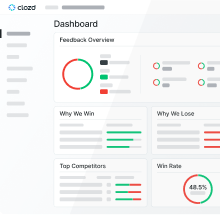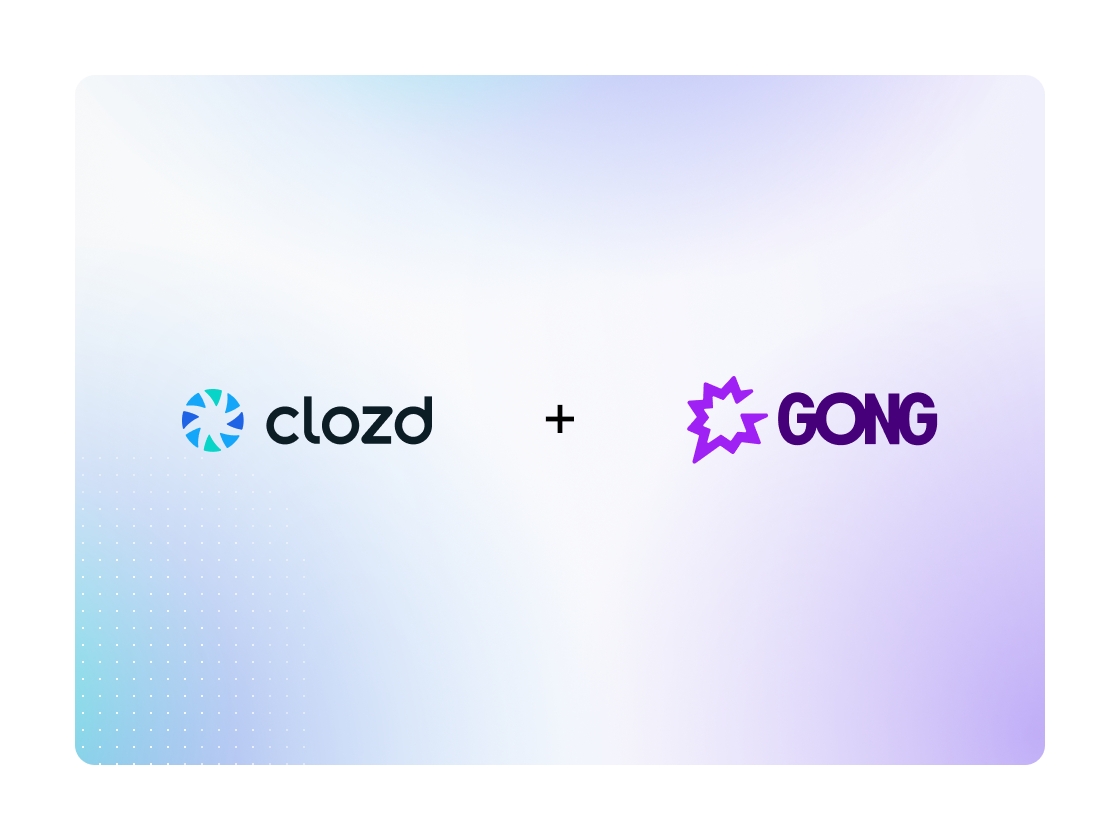For B2B companies, the journey a new customer takes from signing the contract to fully realizing the value of your product or service is critical. This initial phase, known as customer onboarding, isn't just a technical setup; it's the bedrock of a lasting, successful relationship. As an Onboarding Manager, you're at the forefront of this crucial period, shaping first impressions and setting the stage for long-term customer success.
But how do you ensure your onboarding process is truly effective? How do you move beyond simply guiding new users to actively optimizing their experience and driving tangible results? The answer lies in one of your most valuable assets: customer onboarding feedback. This guide will show you how to strategically collect, analyze, and act on that feedback to enhance your customer success strategies, accelerate time-to-value, boost product adoption, and ultimately, secure customer retention.
The Indispensable Link: Onboarding, Feedback, and Customer Success
Customer onboarding is far more than a checklist of tasks. It's a strategic process designed to integrate new customers into your ecosystem, ensuring they quickly understand and utilize your solution to achieve their desired outcomes. In the realm of customer success, effective onboarding is the non-negotiable first step.
Why Onboarding is the Foundation of Customer Success
A well-executed onboarding process lays the groundwork for every positive metric an Onboarding Manager cares about:
- Accelerates Time-to-Value (TTV): New customers want to see results fast. A streamlined onboarding experience helps them achieve their "aha moment" sooner, reinforcing their purchasing decision and building immediate confidence in your solution.
- Drives Initial Product Adoption and Engagement: Onboarding is where new users learn the ropes. It's your chance to guide them to the key features that will deliver the most value, ensuring high feature adoption rates and consistent engagement with your product.
- Directly Impacts Customer Retention and Churn Reduction: The seeds of churn are often sown early. A frustrating or ineffective onboarding experience can lead to early dissatisfaction and, ultimately, customer churn. Conversely, a positive onboarding experience significantly boosts customer retention, setting the stage for a long-term relationship.
- Enhances Overall Customer Satisfaction and Experience: Beyond just functionality, customers value a smooth, supportive, and intuitive experience. A well-designed onboarding journey contributes directly to higher Customer Satisfaction Scores (CSAT), Net Promoter Scores (NPS), and Customer Effort Scores (CES).
The Feedback Imperative for Onboarding Managers
Given the profound impact of onboarding on customer success, it's clear that continuous improvement is essential. This is where customer feedback becomes your most powerful tool. Feedback acts as a compass, guiding your onboarding strategy by:
- Proactive Problem-Solving: Instead of waiting for issues to escalate into support tickets or, worse, churn, feedback allows you to identify and address friction points early in the customer journey.
- Aligning with Customer Needs: Feedback ensures your onboarding program truly meets the unique needs and goals of your new customers, rather than relying on assumptions.
- Optimizing the Onboarding Experience: It provides direct insights into what's working, what's confusing, and what's missing, enabling you to refine your onboarding flow and content.
Gathering Insights: Effective Methods for Collecting Onboarding Feedback
To truly leverage customer onboarding feedback, you need a robust strategy for collecting it. A multi-faceted approach, combining both quantitative data and qualitative insights, will provide the most comprehensive understanding of your new customers' experiences.
The Spectrum of Feedback Collection
Think of feedback collection as casting a wide net. You want to capture different types of information from various touchpoints throughout the onboarding process.
- Quantitative Feedback: This includes numerical data, scores, and metrics that tell you what is happening. Examples include survey scores (CSAT, NPS, CES), completion rates, and time spent on tasks.
- Qualitative Feedback: This provides the why behind the numbers. It comes from open-ended questions, interviews, and direct comments, offering rich context and specific details about customer experiences, pain points, and suggestions.
Combining these two types of feedback gives you a holistic view, allowing you to identify trends and understand the underlying reasons for those trends.
Direct Customer Surveys (CSAT, NPS, CES)
Surveys are a foundational method for gathering structured feedback. They are efficient for collecting data from a large number of new users.
- When to Deploy Them:
- Post-Milestone: After a customer completes a significant step in the onboarding process (e.g., initial setup, first successful use of a core feature).
- Onboarding Completion: Once the entire onboarding program is finished.
- Regular Intervals: For longer onboarding journeys, periodic check-ins can gauge ongoing satisfaction.
- Designing Effective Questions:
- Keep them concise and focused.
- Use a mix of rating scales (e.g., 1-5, 0-10) and open-ended questions to capture both quantitative and qualitative data.
- Examples: "How satisfied were you with the onboarding process?" (CSAT), "How easy was it to get started with [Product/Service]?" (CES), "How likely are you to recommend [Company/Product] to a friend or colleague?" (NPS).
- Always include a section for free-form comments to allow customers to elaborate.
- Tools and Platforms: Leverage dedicated survey tools or your CRM's built-in capabilities to automate survey distribution and data collection.
In-App Feedback and Product Analytics
For Product-Led Growth (PLG) companies or those with robust in-product experiences, in-app feedback and analytics are invaluable.
- Tracking User Behavior: Monitor how new users navigate your product. Which features are they adopting? Where do they get stuck? Product analytics tools can track activation rates, feature adoption rates, and engagement rates, providing a data-driven view of the onboarding flow.
- Micro-Surveys and Feedback Widgets: Integrate short, contextual surveys directly within your product. For example, after a user completes a specific task, a small pop-up might ask, "Was this feature easy to use?" or "Did you find what you were looking for?"
- Identifying Friction Points: Heatmaps, session recordings, and funnel analysis can visually highlight areas where new users struggle, drop off, or spend excessive time, indicating potential bottlenecks in the onboarding journey.
Post-Onboarding Check-ins and QBRs
Once the formal onboarding process concludes, the handoff to Customer Success Managers (CSMs) is crucial. These post-onboarding interactions offer a prime opportunity for deeper qualitative insights.
- Structured Conversations: CSMs can conduct structured check-ins or Quarterly Business Reviews (QBRs) with new clients. While the primary goal is ongoing relationship management, these conversations are excellent for gathering feedback on the initial onboarding experience.
- Opportunity for Deeper Qualitative Insights: Customers may be more candid in a direct conversation than in a survey. CSMs can ask open-ended questions about what went well, what could have been better, and any lingering challenges from the onboarding period.
- Role of Customer Success Managers (CSMs) in this Handoff: Ensure CSMs are trained to ask specific questions about onboarding and to document this feedback systematically. Their direct line to the customer makes them invaluable feedback collectors.
The Power of Unbiased, Third-Party Customer Interviews
While internal feedback collection methods are essential, there's a unique and powerful advantage to gaining insights from an unbiased, third-party perspective. This approach can uncover truths that customers might hesitate to share directly with your team.
- Why Third-Party? Objectivity and Candor: Customers often filter their feedback when speaking directly to a vendor, fearing they might offend, appear ungrateful, or impact their ongoing relationship. An independent third party, however, is perceived as neutral. This neutrality encourages greater candor, allowing customers to speak freely about their true onboarding experience, including frustrations or unmet expectations they might otherwise keep to themselves. This objectivity is paramount for truly understanding the customer experience.
- How It Works: Structured Interviews by Skilled Interviewers:
- Expert Interviewers: Third-party firms specialize in conducting in-depth, qualitative interviews. They employ skilled interviewers who know how to ask probing, open-ended questions that go beyond surface-level responses. They can adapt to customer responses, follow unexpected leads, and uncover nuanced perspectives.
- Structured Approach: While open-ended, these interviews follow a structured guide to ensure consistency and cover all critical aspects of the onboarding process. This includes questions about initial expectations, the clarity of communication, the ease of product setup, the effectiveness of training, and overall satisfaction.
- Focus on the "Why": Unlike surveys that might tell you what happened, third-party interviews excel at uncovering why it happened. They can identify the root causes of friction, confusion, or delight.
- Benefits for Your Onboarding Strategy:
- In-Depth Understanding of the Onboarding Experience: Gain a granular view of the customer journey from their perspective, identifying specific moments of truth or pain points.
- Identifying Root Causes: Move beyond symptoms to understand the underlying reasons for customer struggles or successes during onboarding. For example, a low product adoption rate might be a symptom, but a third-party interview could reveal the root cause is confusing in-app guidance or a lack of personalized support.
- Uncovering Blind Spots: Every internal team has blind spots. An external perspective can highlight issues or opportunities that your team, being too close to the process, might overlook. This could include unexpected use cases, overlooked customer needs, or areas where your onboarding plan is misaligned with customer expectations.
- Actionable Insights for the Onboarding Strategy: The output from these interviews isn't just data; it's actionable intelligence. It provides clear recommendations for refining your onboarding flow, improving customer education, adjusting communication strategies, or even informing product improvements.
- Connecting to Customer Needs and the Overall Customer Journey: These interviews help you understand how the onboarding experience fits into the customer's broader goals and their overall customer journey, ensuring your onboarding strategy is truly customer-centric.
Social Listening and Public Reviews
Don't overlook unsolicited feedback. Customers often share their experiences on social media, review sites, and industry forums.
- Monitoring External Channels: Use social listening tools to track mentions of your company, product, and even specific onboarding terms.
- Analyzing Public Reviews: Pay attention to what customers say about their initial experience in product reviews or testimonials. While not always detailed, these can highlight common themes or strong sentiments.
- Identifying Trends: Look for recurring positive or negative comments that might indicate systemic issues or areas of excellence in your onboarding program.
By combining these diverse feedback collection methods, you'll build a rich, multi-dimensional picture of your customer onboarding experience, providing the foundation for meaningful improvements.
Transforming Data into Action: Analyzing and Interpreting Onboarding Feedback
Collecting feedback is only half the battle. The real value comes from analyzing it effectively and translating those insights into actionable strategies. This process requires a systematic approach to make sense of the data and identify the most impactful areas for improvement.
Beyond the Numbers: Making Sense of Feedback
Once you've gathered your feedback, whether it's survey responses, interview transcripts, or product usage data, the next step is to organize and interpret it.
- Categorizing Feedback (Themes, Pain Points, Successes): Start by grouping similar feedback points. Look for recurring themes related to specific stages of the onboarding process, particular features, or types of interactions. Categorize feedback into positive experiences (successes), areas of confusion or difficulty (pain points), and suggestions for improvement.
- Identifying Trends and Patterns: Are certain issues mentioned repeatedly across different feedback channels? Do specific customer segments consistently report similar challenges? Identifying these trends helps you understand the scope and severity of issues.
- Prioritizing Issues Based on Impact and Frequency: Not all feedback is created equal. Prioritize issues that are:
- High Frequency: Reported by a significant number of customers.
- High Impact: Severely hinder the customer's ability to achieve value or lead to frustration and potential churn.
- Actionable: Something your team can realistically address.
Segmenting Feedback for Deeper Understanding
To gain more granular insights, segment your feedback based on various customer characteristics or onboarding paths.
- By Customer Segment: Large enterprises might have different onboarding needs than small businesses. Analyzing feedback by segment can reveal unique challenges or preferences.
- By Product Tier: Customers on different product tiers might have access to different features or levels of support, impacting their onboarding experience.
- By Onboarding Plan/Flow: If you offer different onboarding paths (e.g., self-serve vs. high-touch), compare feedback across these flows to identify which is most effective for which customer type.
- High-Touch vs. Low-Touch Onboarding: Understand the distinct feedback patterns from customers who received extensive personalized support versus those who primarily used self-service resources. This helps optimize resource allocation and content for each approach.
Cross-Functional Collaboration for Holistic Views
Onboarding doesn't happen in a vacuum. The customer journey involves multiple departments. To truly act on feedback, you need to foster cross-functional collaboration.
- Working with Product, Sales, Support, Customer Success Teams: Share onboarding feedback with relevant teams.
- Product Team: Insights into confusing UI, missing features, or areas where the product doesn't meet initial expectations can inform the product roadmap.
- Sales Team: Feedback on unmet expectations or miscommunications during the sales process can help refine sales messaging and ensure accurate expectation setting.
- Support Team: Recurring support tickets related to onboarding indicate areas where the process is unclear or insufficient.
- Customer Success Teams: They can provide context from ongoing customer relationships and help validate whether onboarding improvements are leading to long-term success.
- Ensuring a Unified Customer Experience: By sharing feedback and collaborating, you ensure that improvements to the onboarding process align with the broader customer journey and contribute to a seamless, positive customer experience across all touchpoints. Regular meetings or shared dashboards can facilitate this exchange of insights.
Driving Improvement: Actionable Strategies Based on Feedback
The ultimate goal of collecting and analyzing feedback is to drive tangible improvements. As an Onboarding Manager, your role is to translate these insights into actionable strategies that refine your onboarding process and enhance customer success.
From Insight to Impact: Improving the Onboarding Process
Here's how you can leverage feedback to make your onboarding program more effective:
Refining the Onboarding Plan and Flow
Feedback often highlights specific steps in the onboarding journey that cause confusion or friction.
- Streamlining Steps, Clarifying Instructions: If customers consistently report difficulty with a particular setup step, simplify the instructions, break it down into smaller actions, or provide more visual aids.
- Personalized Onboarding Plan Based on Customer Needs: Use feedback to understand common customer goals and tailor onboarding paths accordingly. For example, if a customer's primary goal is "integrating with X," ensure their onboarding plan prioritizes that integration. This moves beyond a generic onboarding flow to a more relevant and efficient experience.
- Optimizing the Onboarding Journey for New Customers: Map out the entire onboarding journey from the customer's perspective. Where are the drop-off points? Where do customers express frustration? Use this information to redesign the flow, remove unnecessary steps, or add proactive guidance.
Enhancing Customer Education and Resources
A common theme in feedback is often related to understanding the product or how to achieve specific outcomes.
- Updating Knowledge Base, Creating New Tutorials: If customers frequently ask the same questions, it's a sign your self-service resources need improvement. Create clear, concise articles, video tutorials, or FAQs that directly address these pain points.
- Customer Education Initiatives: Consider developing more structured customer education programs, such as webinars, online courses, or certification programs, especially for complex products.
- Self-Service Options: Ensure your knowledge base is easily searchable and accessible. Empower customers to find answers independently, reducing reliance on support and accelerating their learning.
Optimizing Product-Led Onboarding Elements
For products with in-app onboarding, feedback is crucial for optimizing the user interface and guidance.
- In-App Guidance, Tooltips, Interactive Walkthroughs: If users are getting stuck on specific features, implement contextual tooltips, guided tours, or interactive walkthroughs that appear exactly when and where they're needed.
- Ensuring a Well-Designed In-Product Experience: Feedback can highlight areas where the product's design itself is counter-intuitive during the initial setup. Work with product teams to simplify workflows, improve navigation, and make the "aha moment" more obvious.
Improving Communication and Expectation Setting
Misaligned expectations or unclear communication can lead to significant frustration.
- Clear Communication at Every Stage: Ensure all communications—emails, in-app messages, calls—are clear, concise, and set accurate expectations about what's next and what the customer needs to do.
- Proactive Follow-Up: Implement automated or manual follow-ups at key stages to check in, offer assistance, and ensure customers are progressing. This can prevent small issues from becoming major roadblocks.
Addressing Specific Pain Points Identified
Feedback often points to very specific, recurring issues.
- Targeted Solutions for Common Issues: If many customers struggle with a particular integration, create a dedicated troubleshooting guide or offer specialized support for that integration.
- Reducing Support Tickets: By proactively addressing common pain points identified through feedback, you can significantly reduce the volume of support tickets related to onboarding, freeing up your support team for more complex issues.
The 4 C's of Effective Onboarding
As you refine your onboarding process based on feedback, keep the "4 C's" of effective onboarding in mind. These principles serve as a guiding framework for a truly successful customer journey:
- Context: Provide customers with the "why." Why is this step important? How does it connect to their goals? Help them understand the bigger picture of how your product will solve their specific challenges.
- Connection: Foster a sense of connection with your company and your team. This can be through personalized communication, dedicated onboarding specialists, or simply making it easy for customers to get help when they need it.
- Clarity: Ensure all instructions, documentation, and in-product guidance are crystal clear, unambiguous, and easy to follow. Avoid jargon and technical language where simpler terms suffice.
- Confidence: Empower customers to feel confident in their ability to use your product and achieve their desired outcomes. This comes from successful early wins, clear guidance, and readily available support.
By systematically applying feedback to these areas, you'll not only improve your onboarding process but also directly contribute to higher customer satisfaction and long-term success.
Measuring Success: Tracking the Impact of Feedback-Driven Improvements
Implementing changes based on feedback is a crucial step, but it's equally important to measure the impact of those changes. As an Onboarding Manager, demonstrating the value of your optimized onboarding program requires tracking key metrics that align with your overall customer success goals.
Proving the Value: Key Metrics for Onboarding Managers
Here are the essential metrics to monitor to assess the effectiveness of your feedback-driven improvements:
Time-to-Value (TTV)
This remains a top priority. After implementing changes, track whether the average time it takes for new customers to achieve their first significant success or "aha moment" has decreased.
- How to Track Reduction: Define specific activation milestones (e.g., completing initial setup, inviting team members, running first report). Measure the time from signup to reaching these milestones. Compare TTV before and after your onboarding improvements.
Product Adoption and Activation Rates
Onboarding's primary goal is to get customers using your product effectively.
- Monitoring Feature Adoption: Track the usage of core features that are critical for customer success. Are new users adopting these features more quickly and consistently after your changes?
- Engagement Rates: Monitor daily, weekly, or monthly active users. Are customers interacting with the product more frequently and deeply post-onboarding?
- Activation Rates: Measure the percentage of new users who successfully reach a predefined "activation milestone." An increase here indicates a more effective onboarding program.
Customer Satisfaction (CSAT, NPS, CES)
Directly measure how customers feel about their onboarding experience.
- Tracking Improvements in Scores: Compare your CSAT, NPS, and CES scores from onboarding surveys before and after implementing feedback-driven changes. An upward trend in these scores is a clear indicator of a more positive customer experience.
- Qualitative Feedback Analysis: Beyond the scores, analyze the qualitative comments from these surveys. Are customers mentioning fewer pain points and more positive aspects of the process?
Retention and Churn Rates
The ultimate long-term indicators of onboarding success.
- Long-Term Impact on Customer Retention: Monitor the retention rate of cohorts of customers who went through the improved onboarding process. Are they staying with your company longer?
- Reduced Churn, Especially Post-Onboarding: Pay close attention to churn rates specifically during or immediately after the onboarding period. A decrease in this early churn is a strong signal that your onboarding is effectively setting customers up for success.
Onboarding Completion Rates and Efficiency
These metrics reflect the internal efficiency and effectiveness of your onboarding program.
- Onboarding Completion Rates: What percentage of new customers successfully complete the entire onboarding process? An increase suggests a smoother, less frustrating journey.
- Time to Onboard: How long does the entire onboarding process take on average? If you've streamlined steps, this time should decrease.
- Reduced Support Tickets Related to Onboarding: A well-optimized onboarding process should anticipate and answer common questions, leading to fewer support inquiries during the initial phase.
Customer Lifetime Value (CLTV)
While a broader metric, successful onboarding directly contributes to a higher CLTV.
- The Ultimate Long-Term Metric: Customers who are successfully onboarded are more likely to remain loyal, adopt more features, and potentially upgrade or expand their usage over time, thereby increasing their overall value to your company. While not solely attributable to onboarding, it's a powerful long-term indicator.
By consistently tracking these metrics, you can quantify the positive impact of your feedback-driven improvements, justify your strategic decisions, and continuously optimize your onboarding program for maximum customer success.
Beyond Onboarding: How Feedback Drives Broader Innovation
The insights you gain from customer onboarding feedback extend far beyond just refining the initial setup process. This rich data can become a powerful catalyst for innovation across your entire organization, influencing product development, sales strategies, and the overall customer success approach.
Leveraging Onboarding Insights Across the Business
Onboarding feedback offers a unique window into the customer's initial experience, their unmet needs, and their first impressions of your product and company. This makes it an invaluable resource for various departments:
- Product Development:
- Informing Roadmap: Feedback on confusing features, missing functionalities, or unexpected use cases during onboarding can directly inform the product roadmap. If many new users struggle with a specific part of the UI, it signals a need for design improvements or new features.
- New Features: Customers might suggest features they wish they had during onboarding, or highlight areas where the product doesn't quite meet their initial expectations. These insights can spark ideas for new product capabilities.
- Usability Improvements: Direct feedback on the ease of use, clarity of navigation, and overall product experience during the critical first few weeks is gold for product teams.
- Sales & Marketing:
- Refining Messaging: If onboarding feedback reveals that customers had different expectations than what was set during the sales process, it's a clear signal to refine sales and marketing messaging. This ensures that what's promised aligns with what's delivered.
- Setting Accurate Expectations: By understanding common onboarding challenges, sales teams can proactively address potential friction points and set more realistic expectations about the implementation process and time-to-value.
- Identifying Ideal Customer Profiles: Feedback can help identify which types of customers onboard most successfully, allowing sales and marketing to target similar profiles more effectively.
- Customer Success Teams:
- Better Handoff: Onboarding feedback provides CSMs with a deeper understanding of a new customer's initial experience, including any lingering questions or specific challenges they faced. This enables a smoother, more informed handoff from onboarding to ongoing customer success management.
- Proactive Support: By knowing common onboarding pitfalls, CSMs can proactively offer support or resources to customers who might be experiencing similar issues, preventing problems before they escalate.
- Tailored Engagement: Insights into a customer's initial goals and how well they were met during onboarding allow CSMs to tailor their ongoing engagement strategy, focusing on areas that will drive continued value.
- Upsells and Expansion:
- Identifying Opportunities: Feedback can reveal areas where customers are looking for more advanced functionality or additional services that your product offers. For example, if customers consistently ask about a feature not included in their current tier, it's an upsell opportunity.
- Understanding Value Gaps: By understanding what customers struggled with or what they wished they had during onboarding, you can identify potential value gaps that could be filled by additional products or services, leading to expansion revenue.
By sharing and acting on onboarding feedback across departments, you transform it from a departmental tool into a company-wide asset, fostering a culture of continuous improvement and customer-centric innovation.
The Continuous Cycle of Onboarding Excellence
For Onboarding Managers, the pursuit of customer success is an ongoing journey, not a destination. Customer onboarding feedback isn't a one-time project; it's a continuous cycle of listening, learning, adapting, and improving.
Embrace the mindset that your onboarding process is a living, evolving entity. New customers will always bring fresh perspectives, new challenges will emerge, and your product will continue to grow. By consistently collecting feedback, analyzing it with a critical eye, and implementing data-driven changes, you ensure your onboarding program remains agile, effective, and truly customer-centric.
Your role as an Onboarding Manager is pivotal. You're not just guiding new users; you're shaping their entire experience, influencing their long-term success, and directly impacting your company's growth. By making customer onboarding feedback a cornerstone of your strategy, you empower yourself to build an onboarding program that not only welcomes new clients but propels them towards sustained value and loyalty. Embrace the feedback, drive the change, and watch your customers thrive.











.svg)



.png)







.svg)

.svg)




